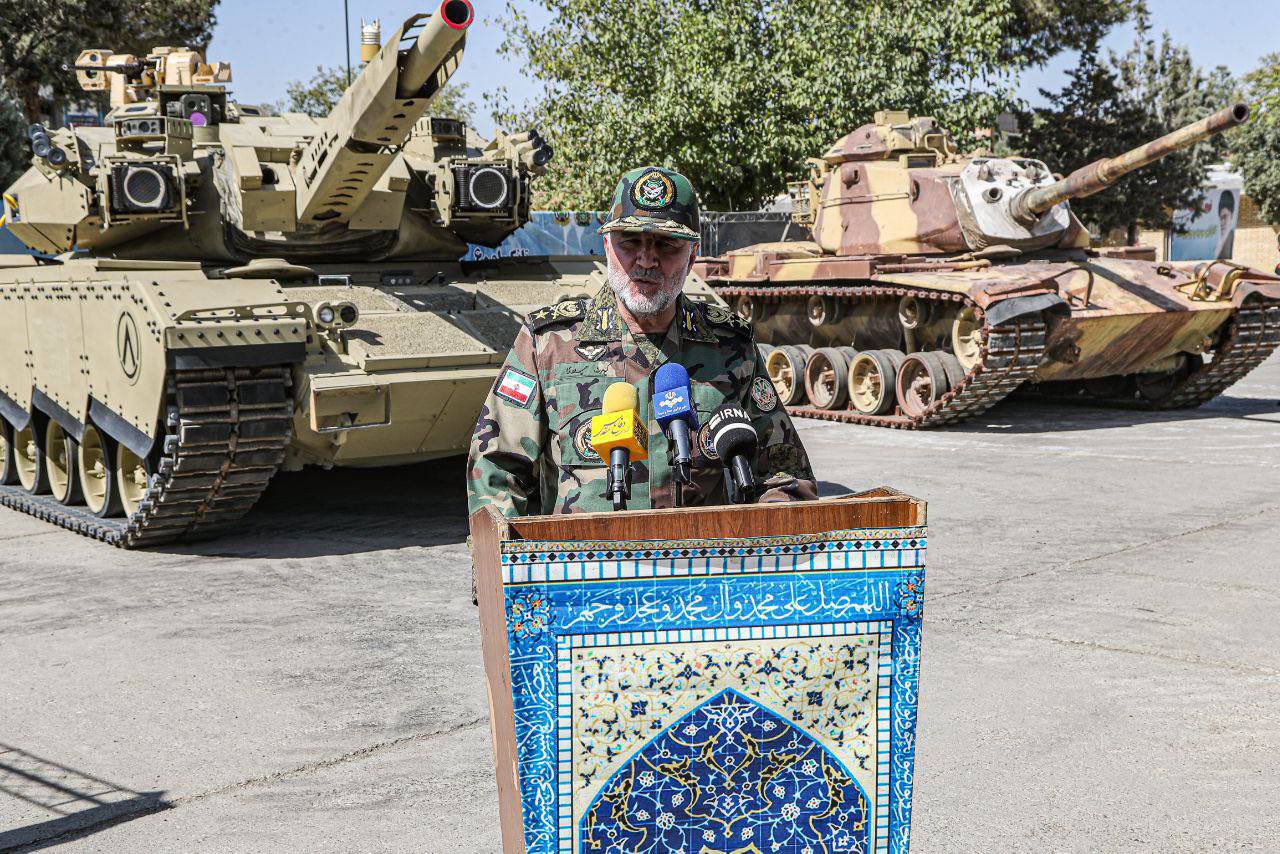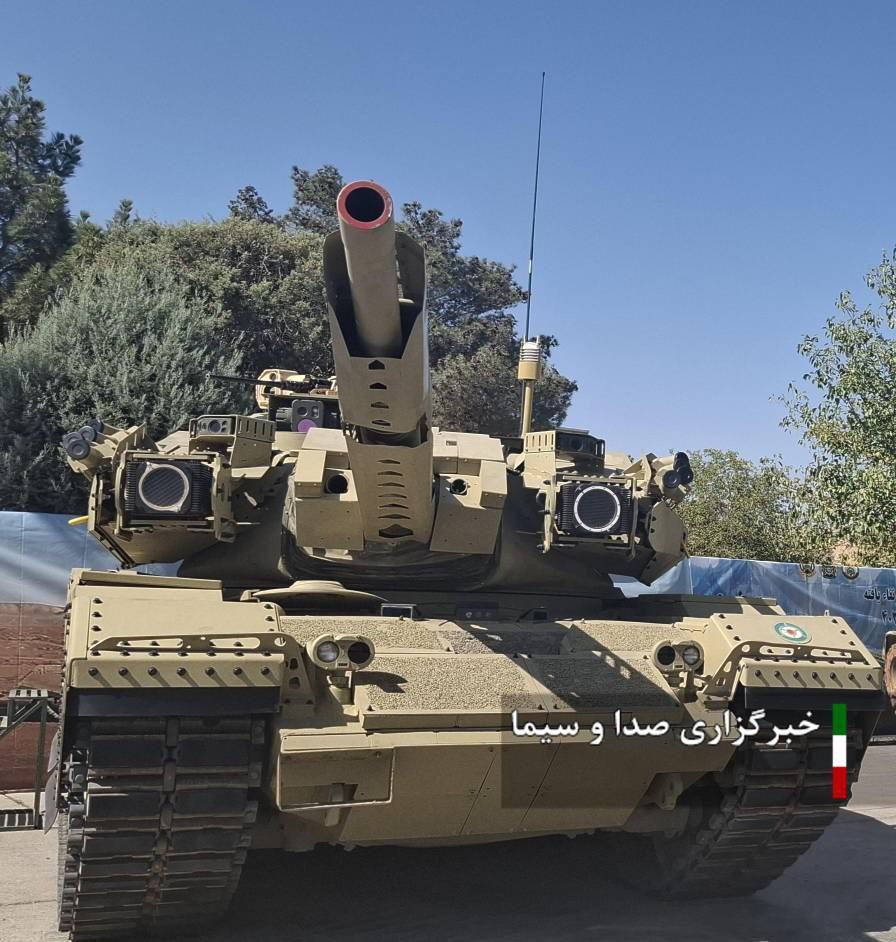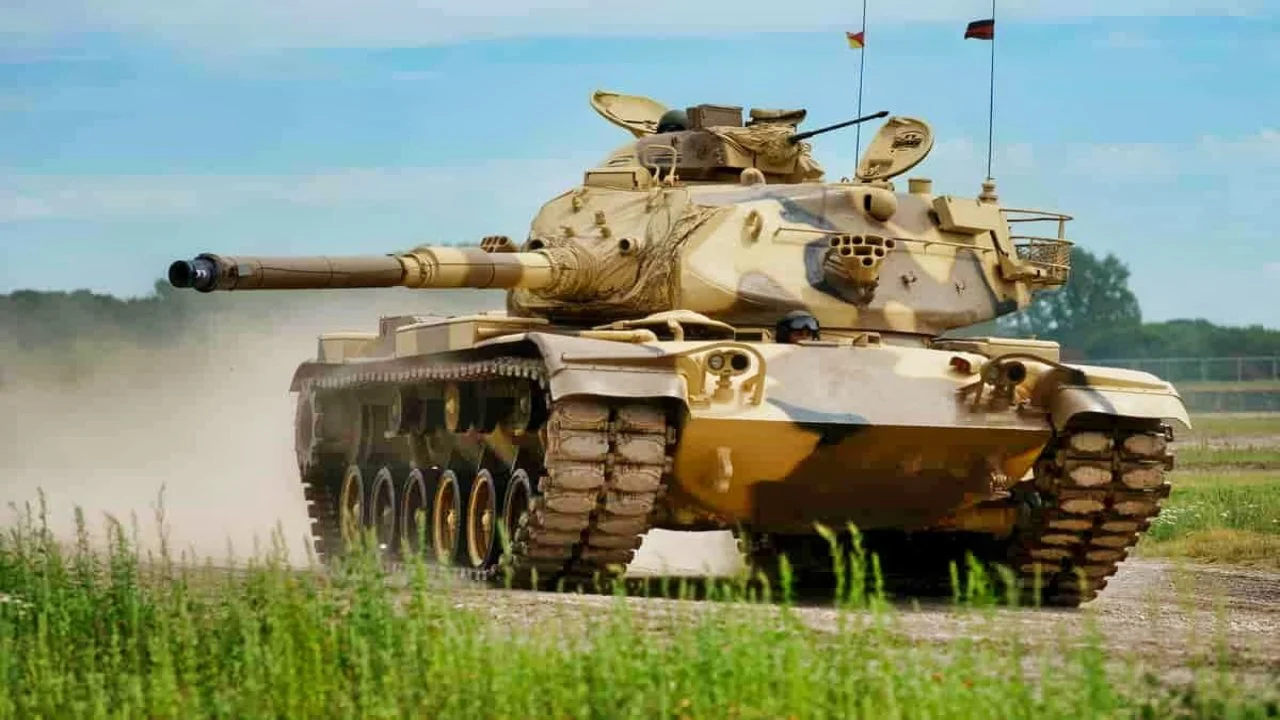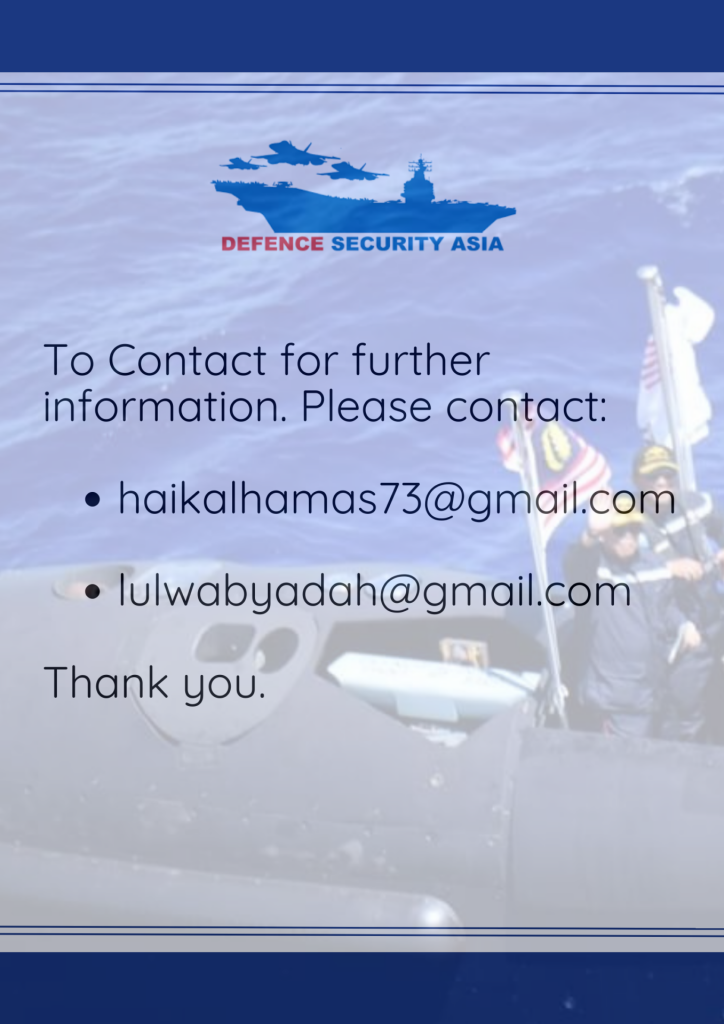Iran Begins Receiving Soleiman-402 MBT—A Radical Upgrade of the U.S.-Made M60 Patton
With reinforced armor, a sophisticated fire-control system, and enhanced weaponry, the Soleiman-402 is poised to give the Iranian Armed Forces a formidable edge on the battlefield, solidifying its presence as a key player in regional military dynamics.
(DEFENCE SECURITY ASIA) – In a bold step towards military modernization, Iran has begun taking delivery of the newly developed Soleiman-402 main battle tank (MBT), a cutting-edge transformation of the decades-old M60 tanks originally supplied by the United States in the 1970s.
This ambitious upgrade is a testament to Tehran’s relentless pursuit of military self-sufficiency, seamlessly integrating state-of-the-art technology into its aging arsenal.
The Soleiman-402 is more than just an upgrade—it is a statement of Iran’s growing defense capabilities.
With reinforced armor, a sophisticated fire-control system, and enhanced weaponry, the Soleiman-402 is poised to give the Iranian Armed Forces a formidable edge on the battlefield, solidifying its presence as a key player in regional military dynamics.
The move underscores Iran’s commitment to strengthening its domestic defense capabilities, particularly amid ongoing regional geopolitical tensions.
The M60, originally developed by the United States in the 1950s and introduced into service in the 1960s, has remained a critical component of Iran’s ground forces for decades.

During the 1970s, Iran acquired a formidable fleet of M60 tanks under Shah Mohammad Reza Pahlavi’s ambitious military modernization drive, made possible through close military ties with the United States.
However, the tides of history shifted dramatically after the 1979 Islamic Revolution, cutting off Tehran’s access to U.S. military supplies.
Despite this rupture, the M60 remained a backbone of Iran’s armored divisions, standing the test of time.
Determined to keep its armored forces battle-ready, Iran has relentlessly pursued efforts to maintain and enhance its M60 fleet, ensuring these Cold War-era machines remain lethal on the modern battlefield.
Once boasting an arsenal of approximately 460 M60 tanks, Iran’s fleet has now dwindled to an estimated 150. Yet, rather than allowing these aging war machines to fade into obsolescence, Iran has embarked on an ambitious overhaul—one that has given birth to the Soleiman-402.
Reports suggest Iranian military engineers have introduced sweeping structural and technological transformations to the M60 platform, turning a relic of the past into a battle-hardened force for the future.

Military analysts have been struck by the radical transformation of Iran’s upgraded M60 tanks, with some suggesting that the original turret has been completely replaced with a cutting-edge design.
Though the full extent of the modifications remains shrouded in secrecy, comparisons with the legacy M60 reveal a dramatic overhaul—one that signals Iran’s intent to redefine the battlefield capabilities of its aging armor.
Among the most striking enhancements is the addition of a high-tech combat module, now boasting a Remote-Controlled Weapon System (RCWS) and machine guns, bringing the tank in line with the lethal sophistication of modern armored warfare.
But perhaps the most game-changing upgrade lies in its firepower.
While the original M60 was equipped with a 105mm cannon, speculation is rife that Iran has swapped it out for a far more formidable weapon.
Some reports suggest the possibility of a 125mm main gun—the standard caliber for Russian battle tanks—while others point to a 120mm cannon, aligning it with NATO firepower.
Beyond its offensive capabilities, Iran has also reinforced the Soleiman-402’s battlefield resilience.

The tank is now clad in Explosive Reactive Armor (ERA) panels across its hull and turret, complemented by advanced composite SLERA armor—providing it with a level of protection comparable to the world’s most modern battle tanks.
These enhancements suggest that Iran is not merely upgrading an old war machine, but forging a new battlefield predator.
To enhance battlefield survivability, the Soleiman-402 has been fitted with Explosive Reactive Armor (ERA) panels on the hull and turret, as well as composite SLERA armor, similar to those found on modern tanks.
These upgrades significantly improve the tank’s ability to withstand enemy fire.
Additionally, the tank is now equipped with a thermal imaging system, allowing for high-precision targeting in various combat conditions, a crucial upgrade for modern armored warfare.
One of the most intriguing observations by defense analysts is the striking resemblance between Iran’s upgraded M60 and the Israeli-upgraded M60T Sabra.

The design of the turret and panoramic sighting system bears a notable similarity to Israel’s version of the tank, raising questions about whether Iran’s modernization program may have been influenced by reverse engineering of the Sabra model.
While the exact origins of the modifications remain unclear, the striking parallels suggest that Iran has drawn from existing tank upgrade programs, possibly adapting foreign design elements to enhance the operational effectiveness of its own armored forces.
The introduction of the Soleiman-402 highlights Iran’s determination to extend the lifespan of its legacy military hardware while integrating modern battlefield technologies—underscoring its broader push for self-sufficiency in defense amid continued international sanctions and military embargoes.
— DEFENCE SECURITY ASIA


